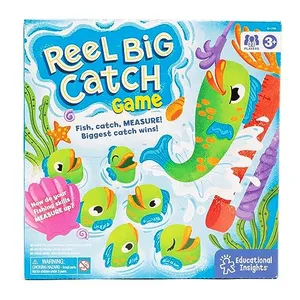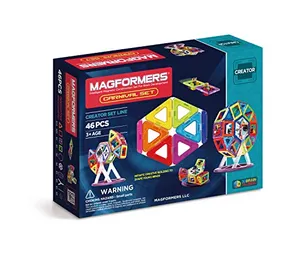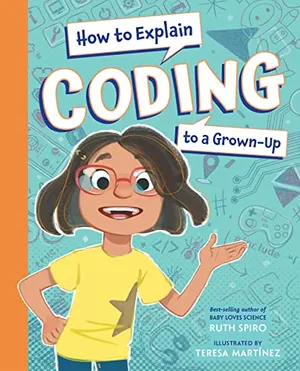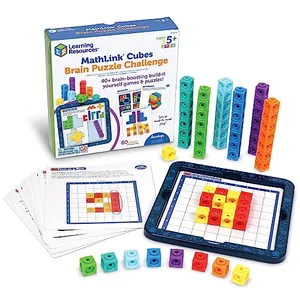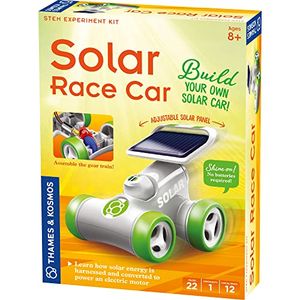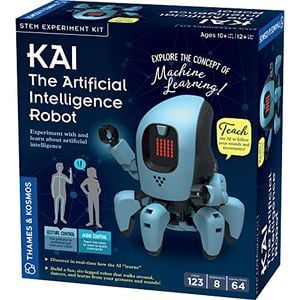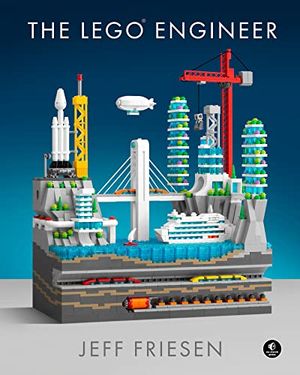Ten Engineer-Selected STEM Toys to Give as Gifts in 2023
From coding to building to circuitry, these educational activities support basic skills to serve children in science, engineering and beyond
:focal(1000x733:1001x734)/https://tf-cmsv2-smithsonianmag-media.s3.amazonaws.com/filer_public/55/d0/55d077af-a16a-43ff-9b36-9a14d46de2b0/purdue-egg2023.jpg)
When shopping for the kids in your life, the wide-ranging slew of toys in stores and online can be daunting. To make the gift-giving process a little bit easier, a group of engineers has selected their favorite expert-tested, educational toys focused on science, technology, engineering and math.
Since 2014, the Inspire Research Institute for Pre-College Engineering at Purdue University has assembled a guide to top-tier toys that build fundamental skills for STEM pursuits. This time around, the products range from measuring games to coding activities—and even include a robot that introduces children to artificial intelligence.
“Each gift really helps children explore what it means to be an engineer in some way,” says Tamara Moore, executive co-director of Inspire.
The toys were tested by a team of four engineering student reviewers, who played with the games, books and puzzles for at least 30 minutes each. They began with a pool of 52 gifts that had been submitted by their manufacturers and rated each one based on which basic STEM competencies it could support—and, of course, on whether they had fun.
This year, the engineers also brought in a local troop of Girl Scouts to try out the toys and share their thoughts—marking the first time since the start of the Covid-19 pandemic that child toy-testers were invited into the lab to help with the guide. They asked the girls, who were roughly ages 10 to 12, what they liked and disliked about each toy, and they observed how the children interacted with each item.
While play doesn’t need to have a specific educational purpose, a lot of the skills required for engineering are first learned through toys, Moore says. For example, even something as simple as building blocks strengthens spatial reasoning, or the ability to understand and visualize how objects move in three dimensions. Toys that require assembly can build fine motor skills, and games based on coding promote computational and logical thinking. Design-focused toys might teach kids to test and improve on different constructions.
“By suggesting gifts that give those kinds of reasoning tasks, we’re hoping to provide opportunities for young learners who might not have developed the skills or otherwise been taught that the STEM field was a possibility for them,” Moore says.
Twenty-seven toys are featured in this year’s full engineer-approved gift guide, but here’s a selection of ten standouts—including the top five as ranked by the Inspire team.
Reel Big Catch Game
Ages 3+, Top Five Toy
At a first glance, the plastic fish in Educational Insights’ Reel Big Catch Game all look to be the same size. The body of each fish folds into itself like an accordion, and when the game is set up, only identical heads stare upward from the table. But once a child snares a fish with the included rod, it extends outward to a different length, and the players reveal the size of their catches using rulers.
This game is focused on measuring—a spatial reasoning skill that’s easily overlooked. “The math education research suggests that measuring with a ruler is a really, really difficult thing for kids,” Moore says. But this toy “makes measurement a fun thing to do.” It includes an element of competition as players try to catch the biggest fish, and it’s even doable for small children, she adds. (Educational Insights, $24.99)
Reel Big Catch Game
“School” your kids with this whopper of a game that’s fun for the whole family! Players use a fishing pole to “catch” telescoping fish and measure them with the measuring tape.
Carnival Plus Set
Ages 3+
Among a plethora of similar toys on the gift guide by Magformers, the Carnival Plus Set stood out to the reviewers, because it involves movement. Typically, “you’re trying to make a building that doesn’t fall over,” says Avery Rose “A.R.” Miller, a student in aeronautical and astronautical engineering at Purdue University and the review team lead. “In this case, you’re trying to make something that does intentionally spin.”
Using the magnetic squares and triangles included in the game, children can choose to follow instructions from the provided booklet or make their own unique arrangements. The game hones engineering skills by allowing kids to test and improve on their constructions. By building out from a rotating axis, young engineers can make structures that resemble Ferris wheels or carousels. The set even includes two figurines that can sit and “ride” in the child’s carnival creation. (Magformers, $79.99)
Magformers Carnival Set
Click! Connect! Create! With Magformers Carnival set you can build rides so real, you’ll start to think you’re actually there.
KIBO 15 STEAM Robot
Ages 3-7, Top Five Toy
The KIBO 15 STEAM Robot teaches kids how to code without a single screen involved. Children can scan barcodes on blocks, which are tied to commands that the robot will carry out in the order they are scanned. It can move, listen for noise and create a flashing light show, following the instructions of the young coder. “It’s a really fun way for students to be able to get at learning to think algorithmically—the way that you would talk to a computer,” Moore says.
An instruction booklet contains tasks for kids to complete with the robot. But they can also use the toy for open-ended play. “The great part about this is that it’s really free-form,” Miller says. “You can make new challenges. You can make little obstacle courses. You can try new things.” (Kinderlab Robotics, $380)
KIBO 15 STEAM Robot
KIBO is a screen-free programmable robot kit designed for young learners in PreK-2nd grade. Based on 20 years of research, KIBO lets kids bring their own robot to life.
How to Explain Coding to a Grown-Up
Ages 4-8, Top Five Toy
This picture book begins with a witty (and accurate) premise—that adults don’t know everything. Then, through the voice of its child narrator, How to Explain Coding to a Grown-Up empowers kids to learn what it takes to give instructions to a computer—and to teach their grown-ups how to do it, too. With detailed pictures, such as one showing the inside of a laptop, and tongue-in-cheek advice included as “pro tips,” this book walks readers through concepts such as hardware, software, building algorithms and debugging code. It uses familiar scenarios like going to the playground to explain computer coding in an approachable manner. The book is informative, Moore says, “but it’s written in such a hilarious way.” (Charlesbridge, $17.99)
How to Explain Coding to a Grown-Up
The best-selling author of the Baby Loves Science series levels up with this playful STEM picture book introducing kids–and grown-ups–to the coding world.
MathLink Cubes Brain Puzzle Challenge
Ages 5+
In the MathLink Cubes Brain Puzzle Challenge, kids snap little colored cubes together to complete dozens of activities included in the game’s deck of puzzle cards. Some focus on creating shapes to build symmetry; others sharpen critical thinking, pattern recognition and basic math skills. The tactile toy promotes spatial reasoning, and it can be played with alone or with another person.
“It’s nice, because this is a game that can start out for younger kids,” Miller says. “But our Girl Scouts actually played with this toy and enjoyed it.” (Learning Resources, $19.99)
MathLink Cubes Brain Puzzle Challenge
Let the brain games for kids begin! Kids build and play over 40 brain-boosting challenges, puzzles, and educational games for kids that enhance critical thinking and early math skills with the MathLink Cubes Brain Puzzle Challenge set from Learning Resources.
Spintronics Act One
Ages 8+, Top Five Toy
Electrical circuitry can be a complicated subject—but Spintronics Act One breaks it down for visual learners. The game doesn’t need batteries, and it doesn’t use electricity. Instead of real voltage moving through a wire, the toy uses chains linked to spinning gears. Components of typical electrical circuits, from switches to resistors, each have their own counterpart in the Spintronics set. In a traditional circuit, the flow of electricity is essentially invisible. But with this toy, “you can see it move and work,” Moore says.
Spintronics includes a puzzle booklet that’s designed like a graphic novel with various challenges for children to tackle. Each one encourages kids to build a circuit through a storyline of a young clockmaker bringing electricity to the world. (Upper Story, $75.95)
Micro:bit Base Kit V2
Ages 8+
Originally developed by the BBC in 2014, the Micro:bit is an educational tool meant to teach children about coding. The Micro:bit Base Kit V2 is best for kids with some prior programming experience or older students who have built a foundation in understanding computers. Children can write instructions for the Micro:bit in the simple programming language Microsoft MakeCode or advance into others, such as JavaScript and Python. With it, they practice problem-solving and trial and error, tweaking their code until it works.
“Essentially, Micro:bit is an electronic that allows someone to begin to work with really basic computers and do different programming projects,” Miller says. With the Base Kit, children can code for a wide variety of outcomes, including prompting the Micro:bit to display text or listen for noise.
Beyond the Base Kit, the manufacturer, Boolean Girl, produces other kits that expand what a child can do with their Micro:bit, including adding sensors, buzzers and parts that move and roll. (Boolean Girl, $39.99)
/https://tf-cmsv2-smithsonianmag-media.s3.amazonaws.com/filer_public/b0/1f/b01f24c5-b8b9-4336-a2e1-6d14a41adc8d/microbit.jpg)
Solar Race Car
Ages 8+
Thames & Kosmos’ Solar Race Car provides a basic introduction to circuitry and clean energy. First, kids must assemble the car using parts that snap together, a task that builds skills in problem-solving, spatial reasoning, fine motor dexterity and logical thinking. Then, they’ll have a solar-powered toy that runs without a battery. Young engineers can adjust the angle of the solar cell to put it in the optimal sunlight-collecting position. A booklet teaches users about the real-world applications of solar power.
“The thing that’s really interesting is that you get a solar cell … and you get to use the circuitry to hook that up,” Miller says. “It’s a really great entry level for someone that might not be sure that they’re into fabrication or circuitry but wants to take a whack at it.” (Thames & Kosmos, $15.95)
Solar Race Car
Looking for a fun and educational activity about solar power? This sleek, compact race car harnesses the energy from the sun to power an electric motor that really gets it moving!
Kai: The Artificial Intelligence Robot
Ages 10+, Top Five Toy
Kai: The Artificial Intelligence Robot is a six-legged machine that wirelessly connects to a tablet or smartphone. With an affiliated app, children can prompt the robot to move in different directions, turn and stop by making sounds or motions. Then, with practice, the “artificially intelligent” robot gets better at recognizing the child’s gestures and noise commands, even if they are slightly different each time.
An accompanying booklet explains the history of artificial intelligence, how it’s used in various fields and what its future might look like. “Artificial intelligence is a huge area of need. And it’s sort of the next frontier that we’re working on understanding how to deal with,” Moore says. “This is potentially introducing [kids] into the world of artificial intelligence.” (Thames & Kosmos, $99.95)
Kai: The Artificial Intelligence Robot
Explore the future of advanced computing technology with KAI — short for Kosmos Artificial Intelligence! Build and program an intelligent, six-legged, app-enabled robot that uses machine learning to react to the gestures and sounds that you make.
The Lego Engineer
Ages 12+
The Lego Engineer showcases feats of engineering from the real world—from bridges to maglev trains to rockets—and demonstrates how to build them with Lego blocks. For each, the book breaks down the engineering principles that allow it to work and explains some of the history and context around the innovation. With the instructions provided by author and Lego artist Jeff Friesen, children can construct their own Titanic, hovercraft, suspension bridge or International Space Station.
Creating these structures requires an extensive set of Legos. Still, the book encourages kids to make do with what they have and come up with creative solutions to build their masterpieces if they’re missing a component.
“It draws together real-world applications and tactile skills, spatial reasoning—all those good engineering skills that we want to build up,” Miller says. While a child can learn from the book, it, like many of the other toys on this list, has a more universal appeal—Miller even bought a copy for herself. (No Starch Press, $24.99)
The LEGO® Engineer
LEGO® bricks meet The Way Things Work in this fun, informative tour of the world of engineering, from the creative mind of expert LEGO® builder Jeff Friesen.
A Note to our Readers
Smithsonian magazine participates in affiliate link advertising programs. If you purchase an item through these links, we receive a commission.
